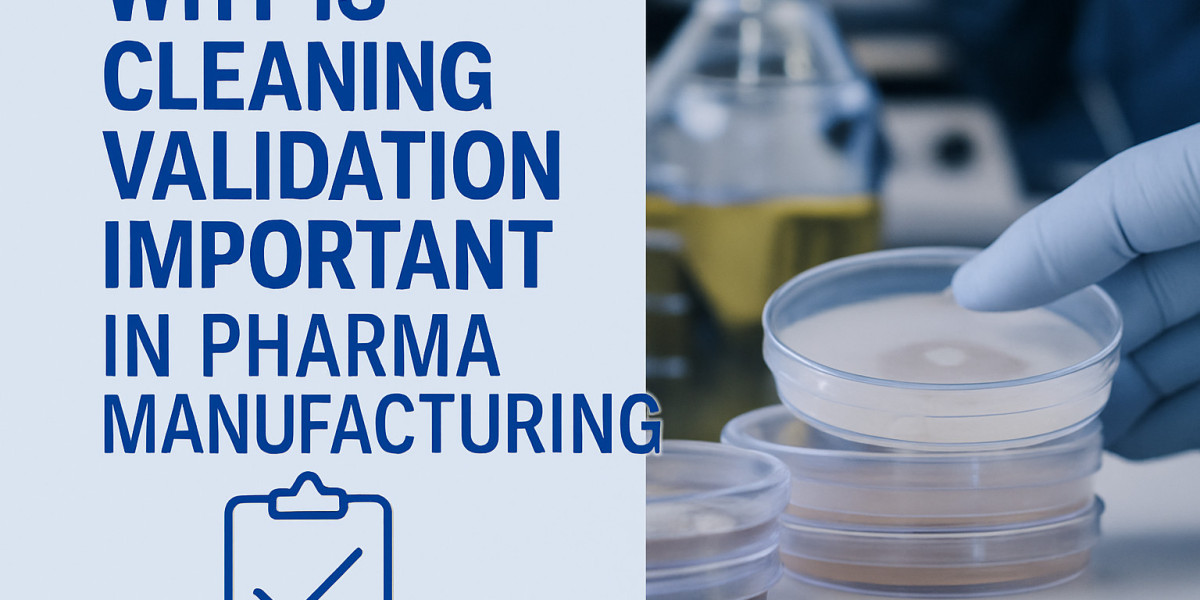In this blog, we’ll dive deep into the significance of cleaning validation, explore regulatory requirements, challenges, and how pharma companies can optimize the process using digital tools.
What Is Cleaning Validation?
Cleaning validation is the documented process of ensuring that cleaning procedures effectively remove residues from manufacturing equipment. This includes:
Active pharmaceutical ingredients (API)
Excipients
Cleaning agents
Microbial contaminants
Product degradation byproducts
It ensures that the equipment is safe for subsequent use and complies with Good Manufacturing Practices (GMP).
Why Is Cleaning Validation Mandatory?
Cleaning validation is essential because:
It prevents cross-contamination between products
It ensures patient safety and product efficacy
It helps meet regulatory standards (FDA, EMA, WHO, PIC/S)
It protects companies from compliance issues, warnings, and recalls
It builds trust with regulatory auditors, customers, and stakeholders
Regulatory Guidelines for Cleaning Validation
Global regulators enforce strict cleaning validation requirements:
| Regulatory Body | Guideline Reference |
|---|---|
| US FDA | 21 CFR Part 211.67 |
| EU EMA | Annex 15 of EU GMP |
| WHO | Technical Report Series 1019, Annex 3 |
| PIC/S | PI 006-3 and PI 007-6 |
| ICH | Q7: Good Manufacturing Practice for Active Pharmaceutical Ingredients |
Key Components of Cleaning Validation
Cleaning Procedure Qualification
Validating the process parameters, detergents, and techniques used.Residue Limits (MACO): Establishing Maximum Allowable Carryover (MACO) values based on toxicity and dose.
Sampling Methods
Swab sampling (preferred for hard-to-clean areas)
Rinse sampling (for overall residue detection)
Analytical Methods
Validated methods (HPLC, TOC, etc.) to detect residual API, detergents, or microorganisms.Worst-Case Evaluation
Ensuring cleaning is effective even in the most challenging conditions (e.g., most potent product, smallest surface area, etc.)
Consequences of Poor Cleaning Validation
Without a validated cleaning process, companies risk:
Product recalls
FDA 483 observations or warning letters
Harm to patients
Damage to brand reputation
Expensive rework and downtime
Common Cleaning Validation Challenges
Manual and paper-based protocols
Difficulty maintaining traceability of cleaning activities
Inconsistent documentation
Data integrity issues
Lack of real-time visibility
Role of Cleaning Validation in Quality Risk Management
Cleaning validation is directly tied to:
* Contamination control strategy (CCS)
Risk-based inspection planning
Product lifecycle management
Regulatory inspection readiness
It forms a core part of any Quality Management System (QMS).
How Software Can Streamline Cleaning Validation
Adopting cleaning validation software brings automation, consistency, and audit readiness:
| Feature | Benefit |
|---|---|
| Digital Protocol Templates | Faster documentation |
| Data Integration | Pulls data from QMS/LIMS |
| Electronic Signatures | 21 CFR Part 11 & Annex 11 compliance |
| Validation Lifecycle Tracking | Full traceability |
| Trending & Analytics | Visual dashboards for audit prep |
Introducing eResidue Pro by PQMS
eResidue Pro is PQMS’s advanced cleaning validation software tailored for regulated pharma operations.
Key Features:
MACO calculator based on product toxicity
Swab and rinse sample tracking
Automated cleaning validation report generation
SOP and protocol management
Full audit trails and compliance controls
Conclusion: Cleaning Validation is a Non-Negotiable Standard








